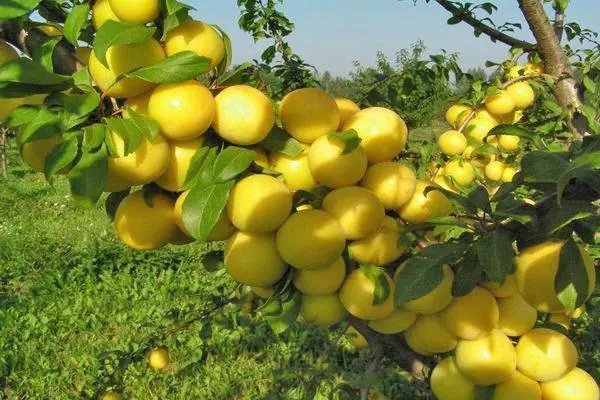Contents
Chinese plum Vika is one of the varieties of Siberian selection. Its main features are high winter hardiness and early maturation.
History of variety breeding
Chinese plum Vika received at the Research Institute of Horticulture of Siberia. M. A. Lisavenko. The work was carried out in the Altai mountains. The author of the variety was M. N. Matyunin.
Several seedlings were obtained by free pollination of the Skoroplodnaya plum. The most resistant specimens have been registered under the name Vika. In 1999, the Vika variety was included in the state register.
Description of the Vika plum variety
Plum Vika is a low-growing tree with a compact, rounded crown. The stem is weakly expressed. Shoots are thin, straight or slightly curved, brown-yellow in color, with small lenticels. The branches grow at an acute angle relative to the trunk.
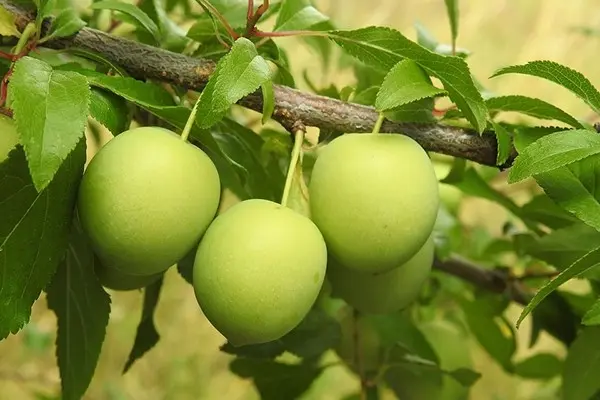
The leaves are dark green, medium in size, 5 cm wide and 11 cm long. The shape of the leaves is elliptical, the base is cone-shaped, the tip is pointed. The sheet is uneven, looks like a boat. Petioles are medium in size.
The flowers are collected in buds of 2-3 pieces, bloom before the leaves. The corolla of the flower is cup-shaped, the petals are small, narrow, white.
Description of Vika fruits:
- the ovoid shape of the plum is elongated at the top;
- height about 40 mm, thickness – 30 mm;
- weight 14–15 g;
- the color is bright yellow;
- coarse skin;
- light yellow pulp, fibrous, medium juicy;
- the stone is small, easily separated from the pulp.
The tasting score of the Vika variety is 4,2 points.
The fruits contain:
- dry matter – 14,6%;
- sugar – 10,6%;
- acids – 0,9%;
- vitamin C – 13,2 mg /%.

Characteristics of a variety
When choosing a Chinese plum variety, attention is paid to its characteristics: resistance to drought, frost, productivity, advantages and disadvantages.
Drought resistance, frost resistance
Yellow Plum Vick has poor drought tolerance. The irrigation scheme is chosen taking into account precipitation. Watering is especially important during flowering and fruiting.
Winter hardiness of fruit buds and wood is satisfactory. Additional plum cover helps to increase this figure.
Plum pollinators
Variety Vika is self-fertile; to obtain a crop, planting of pollinators is required: domestic or Chinese plum. For cross-pollination, it is necessary that the trees bloom at the same time.
The best pollinators for plum Vika:
- Altai Jubilee;
- Peresvet;
- Goryanka;
- Kseniya;
- Пониклая.
Plum Vika blooms and bears fruit in the early stages. Harvest ripens in the first half of August. Fruiting is annual.
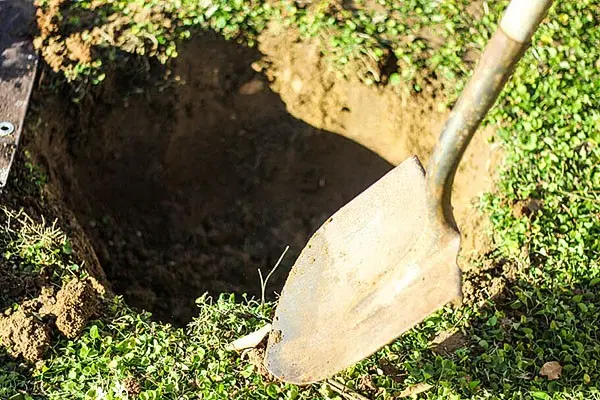
Yield and fruiting
The Vika plum variety is characterized by abundant fruiting. The first fruits ripen 3 years after planting. With age, the yield of a tree increases.
10–12 kg of fruits are removed from the tree. The plum rests on a short stalk: it takes effort to separate it. Variety Vika is characterized by resistance to fruit shedding. Therefore, a ripe plum hangs on branches for a long time.
Scope of berries
Variety Vika has a universal application. The fruits are used fresh as a dessert, as well as in home canning for compote, jam, jam.
Disease and pest resistance
Plum Vika is slightly susceptible to clasterosporia. Fungicides are used to protect the tree from fungal diseases.
Medium pest resistance. The plum is rarely affected by the codling moth, but the tree is often attacked by the seed-eater.
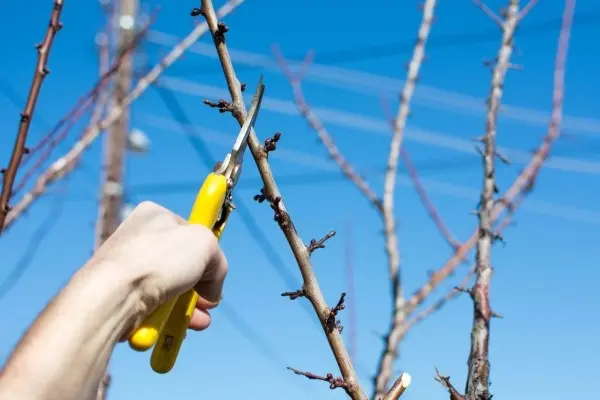
Advantages and disadvantages of the variety
Benefits of the Vika plum variety:
- precociousness;
- fruits do not crumble for a long time after ripening;
- high yield;
- good taste.
Disadvantages of plum Vika:
- low resistance to weathering and drought;
- subject to attack by pests.
Planting and caring for Vika’s plum
Vika plum is planted in spring or autumn, depending on the climatic conditions in the region. Prepare a landing pit in advance, if necessary, improve the composition of the soil.
Recommended dates
In the southern regions, the Vika plum is planted in October, when the sap flow slows down in the trees. The plant will have time to take root and will tolerate the winter cold well.
In cold climates, planting is transferred to spring, when the soil warms up enough. However, the work is carried out before the buds open on the trees.
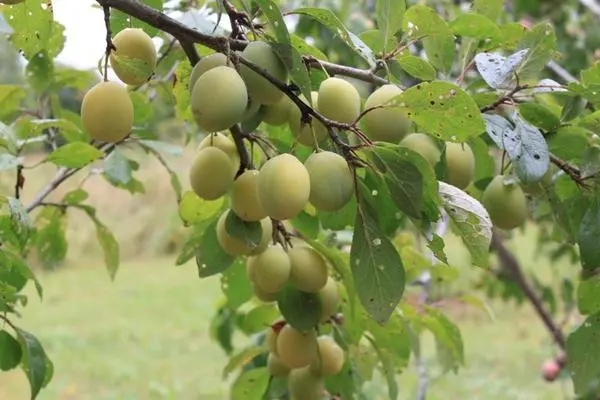
Choosing the right place
The place for the drain is chosen taking into account a number of conditions:
- constant natural light;
- lack of moisture stagnation;
- southern or western location;
- fertile well drained soil.
What crops can and cannot be planted nearby
Good neighbors for plums are cherries, cherries, and cherry plums. From an apple tree and a pear, the culture is removed by 5 m or more. Also undesirable is the neighborhood with large trees: birch, poplar, linden. It is also not recommended to plant Vika plum next to raspberries and currants.

Selection and preparation of planting material
For planting choose annual Vika plum seedlings. Before buying, the plant is evaluated visually. A healthy seedling has a powerful root system, there are no traces of rot, mold, cracks or other damage. If the roots of the tree are too dry, they are kept in water for 4–5 hours before planting.
Landing algorithm
A hole for Vick’s plum is dug 1-2 months before planting a tree. If work is planned for the spring, the foundation pit should be taken care of in the fall. This is necessary due to the shrinkage of the soil.
The order of planting plum Vika:
- A pit with a diameter of 60 cm and a depth of 70 cm is prepared in the selected area.
- Then a wooden or metal stake is driven in.
- Fertile soil and compost are combined in equal quantities, 200 g of superphosphate and 40 g of potassium salt are added.
- The substrate is poured into the pit and left to shrink.
- When the time is right for planting, fertile soil is poured to form a hill.
- Plums are planted on top. Its roots are straightened and sprinkled with earth.
- The soil is compacted and watered abundantly.

Plum Aftercare
- Vika plum is watered 3 to 5 times per season, including during flowering and fruit ripening. However, excess moisture in the soil is more detrimental to the crop. 6-10 liters of water are poured under the tree. The older the plum, the more moisture it needs. Mulching the soil with peat or humus helps to reduce the amount of watering.
- If fertilizers were applied to the planting pit, then full-fledged dressings begin 2 years after planting the plum. Watering is combined with top dressing: 10 g of potash and phosphorus fertilizers are added to 50 liters of water. In early spring, the tree is watered with slurry. Every 3 years they dig up the soil and add 10 kg of compost per 1 sq. m.
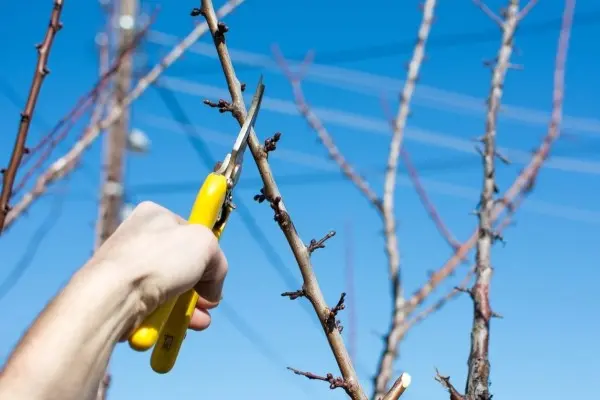
A set of simple measures will help to prepare the Vika plum for winter: abundant watering and mulching the soil with compost. For young trees, frames are built and burlap is attached to them. From above landing cover spruce branches. To prevent the trunk from being damaged by rodents, it is covered with a casing made of a metal pipe or a tin sheet.
Diseases and pests, methods of control and prevention
Culture diseases are listed in the table.
disease | Symptoms | Methods of struggle | Safety measures |
Klyasterosporiosis | Brown spots on leaves with a dark border, cracks in the bark. | Treating trees with copper sulfate or Hom fungicide. | 1. Preventive spraying. 2. Pruning plums. 3. Cleaning the leaves on the site. |
Kokkomikoz | Small brown spots appear on the upper part of the leaves, powdery coating on the lower part. | Spraying the plum with a solution of the drug “Abiga-peak” or “Horus”. |
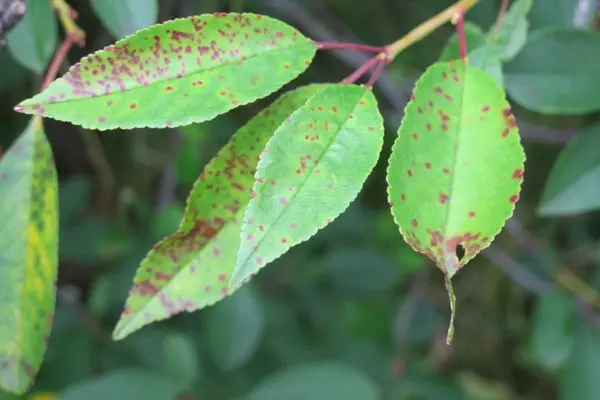
The main pests of the Chinese plum are shown in the table.
Pest | Signs of defeat | Methods of struggle | Safety measures |
Semyaed | Seed-eater caterpillars eat the fruits from the inside. As a result, the plum falls. | Spraying trees with a solution of the drug “Aktellik”. | 1. Removal of root shoots. 2. Cleaning trees from old bark. 3. Whitewashing the stem of the plum. |
Plum aphid | Aphid colonies live on the underside of leaves. As a result, the foliage curls up and dries up. | Treatment of trees with a solution of the drug “Nitrofen”. |
Conclusion
Plum Vika is a reliable Siberian variety that brings a high yield. Crop care comes down to watering and fertilizing. In order for the tree to better endure the winter, it is provided with shelter.
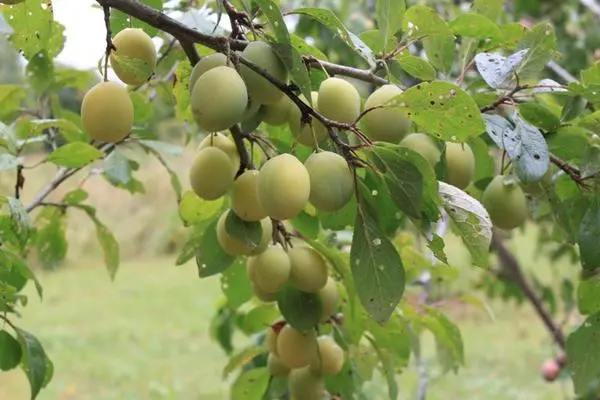
Reviews of gardeners about plum Vika
